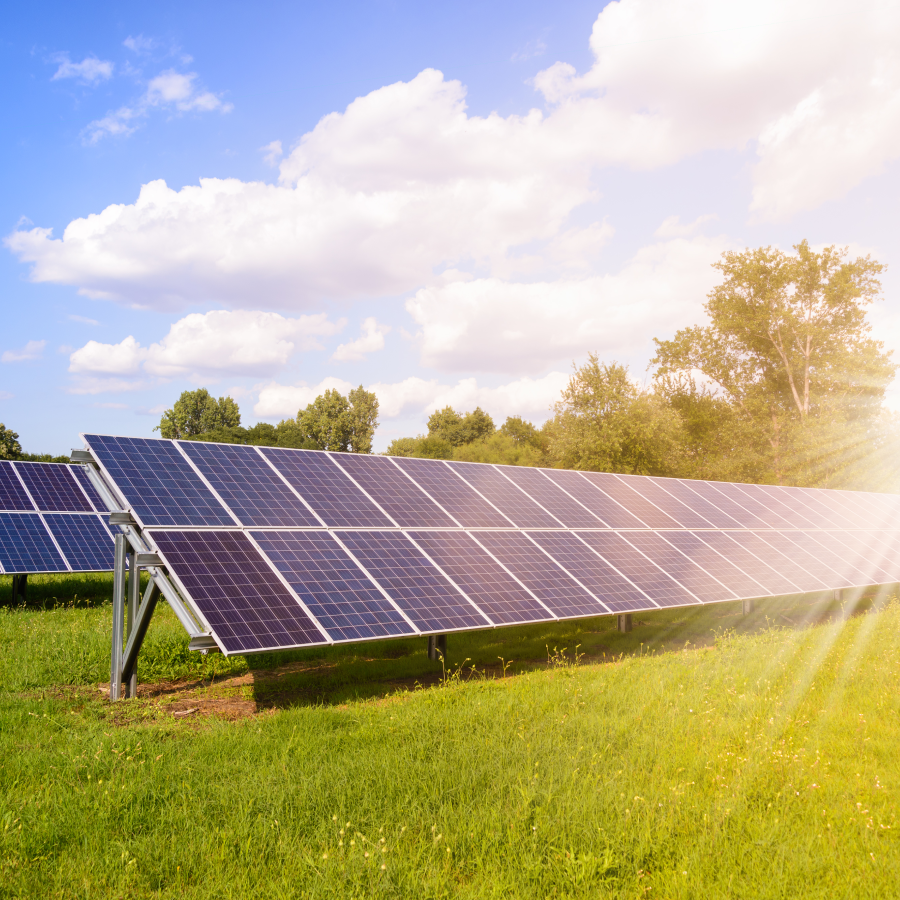


The success of solar energy systems is directly related not only to the quality of solar panels but also to the performance of solar inverters, which are the heart of the system. Solar inverters play a decisive role in energy management and system efficiency, beyond converting direct current (DC) to alternating current (AC). Therefore, inverters are at the center of efficiency improvement strategies in a solar energy system.
In this article, how solar inverters increase the overall efficiency of a solar energy system, the effects of the technologies used on system performance will be discussed in detail.
Solar inverters fulfill the basic function of the system by converting the direct current from solar panels to the alternating current used in homes and businesses. However, minimizing energy losses during this conversion process is directly related to the quality and technology of the inverter.
High-efficiency inverters not only perform the conversion process with less loss, but also increase overall production by optimizing the energy harmony between system components. These inverters increase stability in system performance by performing better load management. In addition, they reduce the risks of inefficiency with smart energy routing, overload protection and system monitoring features. Therefore, the inverter is not just a part of the system, but the determining center of performance.
Solar panels produce variable energy throughout the day depending on the angle of sunlight, temperature and other environmental factors. Inverters with MPPT (Maximum Power Point Tracking) technology analyze these conditions at all times and try to capture the highest power that the panels can produce.
This technology allows the inverter to instantly monitor the panel voltage and current values and keep the panels at the most efficient operating point. Thus, production losses that may occur especially in the morning, evening or cloudy weather are minimized. The MPPT system uses the energy coming from the sun in the most efficient way thanks to the inverter's continuous optimization of voltage and current. This minimizes energy loss in solar energy systems and can increase total production by 10-30%.
When solar panels are installed on roofs facing different directions or are subject to shading due to surrounding objects, serious decreases in energy production may occur. Such situations can negatively affect the entire system.
Multiple MPPT (Multiple Maximum Power Point Tracking) inputs found in advanced inverters allow panel groups to be monitored and controlled separately. Each MPPT input ensures that the panel group it is connected to operates at its own maximum power point. In this way, shading only affects the relevant group, while other panels continue to produce at full capacity. This feature is of great importance in terms of maintaining the total efficiency of the system, especially on roofs facing different directions.
Inverters generate heat during electrical conversion. An overheated inverter can be shut down by automatic protection mechanisms or may experience a decrease in performance. This causes discontinuities in energy production and efficiency losses.
Thanks to well-designed cooling systems (natural air circulation, fan cooling or aluminum coolers), inverters operate at a constant temperature. In addition, the system can dynamically manage temperature control with the help of temperature sensors. This ensures a long life of the inverter and provides stable and uninterrupted energy production throughout the day.
Advanced inverters not only produce energy; they also manage energy more efficiently by working in synchronization with the grid. Thanks to this grid compatibility, the inverter can balance the energy production of the system with the consumption needs.
The energy flow is directed according to the needs of the grid, and the extra energy produced can be transferred to the grid or stored in batteries when necessary. In addition, inverters ensure that the system operates without harming the grid with features such as voltage and frequency control. This compatibility both increases the security of the system and provides more stable energy production. At the same time, inverters can regulate the grid voltage by controlling reactive power and ensure that the system is grid-friendly.
Modern solar inverters provide real-time data to the user thanks to their integrated monitoring systems. These systems allow users to access energy production, consumption, system status and error reports via mobile applications or web interfaces.
In this way, both technical teams and users can intervene early in possible efficiency losses. Monitoring systems also provide opportunities to improve the overall performance of the system by providing retrospective analysis. Potential maintenance needs can be determined in advance with efficiency monitoring and the long-term operation of the system is supported.
Hybrid inverters work integrated with energy storage systems to store excess energy obtained from solar energy in batteries. This energy can be used at night when there is no sun or during a power outage.
Storing energy reduces the system's dependence on the grid and makes energy consumption more balanced. Especially in regions where time-of-use tariffs are applied, it allows low-cost production during the day to be used for nighttime consumption. This feature maximizes energy efficiency by providing continuity throughout the day. In addition, the inverter contributes to system optimization by intelligently managing when and how much stored energy is used.
Solar inverters play a key role in increasing the efficiency of solar energy systems. Thanks to features such as MPPT technology, multiple input structures, advanced cooling systems, smart grid compatibility and remote monitoring, inverters are not just a part of the system, but also an efficiency manager.
Using a high-efficiency inverter provides both short-term energy savings and accelerates long-term return on investment. Investing in the right inverter technology is critical to maximizing the performance of your solar energy system.